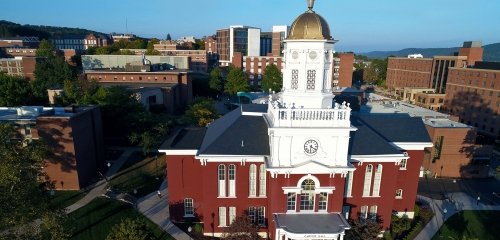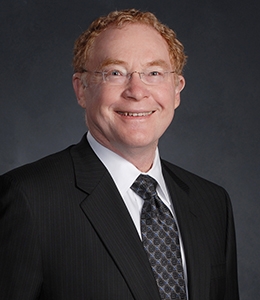

David L. Soltz, Ph.D., became BU's 18th president in January 2008 after serving as provost and senior vice president for academic affairs at Central Washington University.
Since arriving at Bloomsburg, Soltz has concentrated on building programs and infrastructure for today’s students and those who will follow. The university’s strategic plan, Impact 2015: Building on the Past, Leading for the Future, was developed in fall 2010 under his leadership and updated as Impact 2017.
As a result of the strategic plan, numerous academic programs and initiatives were established, largely focusing on experiential learning. A new General Education model, MyCore, was designed to enhance learning opportunities for all students and to prepare them for personal and professional success in an increasingly complex global environment. Programs established in support of these initiatives include Professional U, the McDowell Institute for Teacher Excellence in Positive Behavior Support, the Zeigler Institute for Professional Development, the Center for Supply Chain Management, the Center for Visual and Performing Arts, the Center for Leadership and Engagement, the Center for Healthy Aging and the Center for Earth and Environmental Studies. Under Soltz’s leadership and guidance, Bloomsburg is at the forefront of groundbreaking national research with its Institute for Concussion Research and Services and as part of the NCAA-Department of Defense Concussion Assessment, Research and Education Consortium.
Soltz also led It’s Personal: The Campaign for Bloomsburg University. Launched publicly in October 2015, the campaign reached $60 million by late fall 2016, surpassing its initial $50 million goal. The campaign resulted in BU’s first named college, the Terry and JoAnn Zeigler College of Business; the first Endowed Professorship, Distinguished Professor, and Faculty Fellowships; 110 new scholarships; the Greenly Center, BU’s first official presence in downtown Bloomsburg; and the naming of several facilities, including the Danny Hale Field at Redman Stadium and Steph Pettit Stadium. Soltz and his wife established the Drs. David and Roberta Soltz endowed scholarship to support high-achieving science students.
A strong advocate for high-quality, affordable education, Soltz appeared before the state legislature in support of adequate funding for BU and the entire Pennsylvania State System of Higher Education. His belief in the importance of international education revitalized Bloomsburg’s articulation agreement with the Moscow Finance Academy and initiated agreements with institutions in other countries, including most recently Shandong University and Cameroon which he visited with students in 2011. He delivered the keynote address at the 2010 Global Awareness Society International conference in Poland.
Soltz has overseen more than $240 million in construction and renovations to campus buildings, including Haas Center for the Arts, Bakeless Center, Hartline Science Center, Nelson Field House, Sutliff Hall and Columbia and Elwell residence halls, and construction of a seven-story residence hall set to open in fall 2017, as well as a number of projects to reduce energy consumption.
Looking to the university’s future, Soltz established the Strategic Enrollment Management Division to build an enrollment vision for BU related to demand, program mix and capacity.
During his tenure as BU’s president, he served on the board of directors of the American Association of State College and Universities (AASCU) and as vice chair of AASCU Policies and Purposes Committee; led accreditation site team visits for the Middle States Commission on Higher Education; served as chair of the Pennsylvania State Athletic Conference; and was the State System of Higher Education presidential representative in the collective bargaining negotiations with the Association for Pennsylvania State College and University Faculties (APSCUF).
Soltz’s goals as Bloomsburg’s president grew from his broad and deep higher education background as chief academic officer at Central Washington University, dean of natural and social sciences at California State University at Los Angeles and chair of the department of biological sciences at California State University, Long Beach. As a faculty member, he’s taught courses ranging from freshman seminar and general biology for non-majors to graduate seminars on ecology and evolutionary biology.
Soltz earned a bachelor's degree in zoology from the University of California, Berkeley, and a doctoral degree in biology from the University of California, Los Angeles. His research focuses on environmental biology and the population biology of fishes living in stressful environments, such as high temperature and high salinity. He has written one book, a symposium volume and numerous journal articles and environmental reports.
Active in the local community and the region, Soltz on the board of directors of DRIVE, a regional economic development non-governmental organization. Previously, he served on the Geisinger Health System Advisory Council and the Columbia Montour Chamber of Commerce Board of Directors. The president enjoys hiking and fly fishing in his leisure time and, with his wife, rides and raises quarterhorses. The Soltzes have three children and seven grandchildren.
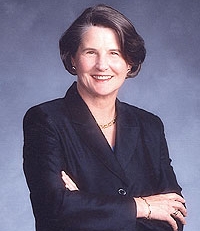
Dr. Jessica Sledge Kozloff became president of Bloomsburg University of Pennsylvania on July 1, 1994. Prior to joining Bloomsburg, Dr. Kozloff served as vice president for academic and student affairs for the State Colleges of Colorado, a system of four regional campuses serving 26,000 students. Before that, she held several administrative positions at the University of Northern Colorado in Greeley.
Dr. Kozloff taught undergraduate courses in political science at the University of Nevada-Reno, Colorado State University in Fort Collins, the University of Northern Colorado, and Metropolitan State College of Denver, and was a member of the graduate faculty at the University of Northern Colorado.
An author, lecturer, and consultant, she earned her Ph.D. in political science from Colorado State University. She completed her master's work in political science at the University of Nevada-Reno, where she also earned a bachelor's degree in education.
Dr. Kozloff served as an American Council on Education (ACE) Fellow during the 1985-86 academic year. Her fellowship involved her in the research by the National Governors Association on improving undergraduate education. She also worked with the Education Commission of the States on a similar project. Following her fellowship year, Dr. Kozloff was elected president of the Council of Fellows, the alumni organization of ACE Fellows.
Active in organizations on the local, national and international levels, Kozloff served as chair of the Middle States Commission on Higher Education, the regional accrediting body for Pennsylvania, New York, New Jersey, Maryland, Delaware, the District of Columbia, Puerto Rico and the Virgin Islands, and was a member of the board of directors of the American Association of State Colleges and Universities, which represents more than 430 public colleges, universities and systems of higher education throughout the U.S. and its territories. She served on the Presidents Leadership Group of the Higher Education Center for Alcohol and Other Drug Prevention and, locally, on the Geisinger Health Plan and the Geisinger Indemnity Insurance Co. board of directors and the Geisinger Health System Community Advisory Council.
Dr. Kozloff's community involvement included service as the chair of the Columbia County United Way campaign and honorary chair of the Bloomsburg Fire Department capital campaign. She was a member of the board of directors of the United Way of Columbia County, Columbia-Montour Boy Scouts of America and Columbia-Montour Chamber of Commerce and a member of the steering committee for the Town of Bloomsburg's Bicentennial Celebration In 2002, she received the Distinguished Citizen Award from the Columbia-Montour Council on Scouting.
Dr. Kozloff was involved in educational missions to Mexico, China, Israel, Italy, Austria, Hungary and Russia. In 2004, she received an honorary doctorate from the Russian Finance Academy in Moscow; in 2007, she was named an honorary alumna of Bloomsburg University.
She and her husband, Stephen Kozloff, MD, live in Arizona. They are the parents of two married children and have four grandchildren.
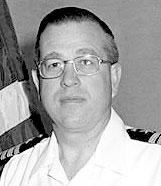
Curtis R. English was born on August 9, 1934, in Montoursville, PA, and had a longtime connection to Bloomsburg, beginning with his graduation in 1956 with a bachelor's degree in business education from Bloomsburg State Teachers College. While in school he was active in a number of clubs and organizations, including the Business Education Club which he served as its president.
After graduation he had a distinguished 30-year career as an officer, aviator, and educator in the United States Navy, rising to the rank of captain in 1978. During this time English graduated from the Naval School of Aviation and the Naval Intelligence School. He also served in a number of positions, including executive assistant to the chief of Naval Education and Training in Pensacola, FL, 1972-74; commanding officer of the Naval and Marine Corps Reserve Training Center, Washington, D.C., 1980-82; and commanding officer of the Naval Reserve Personnel Center, New Orleans, LA, 1983-85. He was awarded the Legion of Merit and the United States of America Meritorious Service Medal for outstanding service to the nation on three occasions. English became an expert on the requirements and sources of strategic and critical materials and the ability of the United States to transport these materials by sea.
While still serving in the navy he earned an MA in public administration from the University of Oklahoma in 1971 and in 1985 an EdD in educational administration from Vanderbilt University. Upon leaving the service in 1986 Dr. English worked for a year as manager of corporate planning for the VSE Corporation of Alexandria, VA, and then went to East Stroudsburg University of Pennsylvania where he became vice president for finance and administration.
In June of 1993 Bloomsburg University's Council of Trustees unanimously endorsed him to be the interim president following the resignation of Harry Ausprich. The State System Board of Governors approved his appointment in July 1993, and he served as president until Jessica Kozloff took over on July 1, 1994.
Dr. English made an impact at Bloomsburg during his short time here, beginning with his first day on August 19, 1993, when he was introduced to the University community. In October construction began on the Student Recreation Center, and his accomplishments also included the reinstitution of the town-gown committee as a means of dealing with areas of concern and his insistence that more money is raised in order to ensure the completion of all four floors of the new library building that was then being planned. On May 14, 1994, Dr. English presided over the University's 125th annual spring commencement, gave the commencement address, and received an honorary Doctorate of Pedagogy degree. It was a fitting tribute to his service to Bloomsburg
Upon completing his term as interim president on June 30 he returned to East Stroudsburg from which he had been granted a leave of absence to resume his duties as vice president. Two years later in 1996, he became president of Hiwassee College in Madisonville, TN, which he served until his death on November 13, 1999, at the age of 65.
Dr. English was an active member of the Bloomsburg University Alumni Association, serving on its board of directors and as president of the Washington, D.C., alumni chapter. In 1974 he was honored by the association with its Distinguished Service Award for his outstanding naval career. In further recognition of his contributions in December 1999 the Council of Trustees passed a resolution to name the large meeting room in the new addition to the Fenstemaker Alumni Center "The Curtis R. English Great Room."
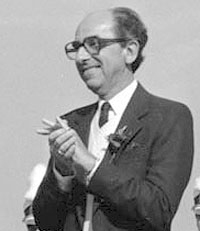
On March 19, 1985, Dr. Harry Ausprich was named as the first permanent president of Bloomsburg University, replacing Dr. Larry Jones who had served for two years in an interim capacity. Dr. Ausprich earned a bachelor's degree in communications and education from New York State University College at Buffalo and a Master's degree in theatre and broadcasting from the University of Wisconsin. His doctorate was in communications and theatre and came from Michigan State University.
He began his administrative career as Dean of the College of Humanities and Fine Arts at the University of Northern Iowa in 1970 and then went back to SUNY Buffalo for five years before becoming Dean of the College of Fine and Professional Arts at Kent State University in Ohio in 1978. He interviewed at Bloomsburg in February 1985 before being offered the position.
Dr. Ausprich began his tenure at Bloomsburg on July 15, 1985, and was formally inaugurated on April 5th of the following year. In keeping with his educational background and interests, he encouraged the growth of arts and humanities at Bloomsburg and supported expanded offerings of artistic performances. His personal involvement in fundraising and the development of other sources of income led to millions of dollars being raised during his eight years. This went primarily into scholarships, but also to the enhancement and remodeling of the University's performing arts facilities: Mitrani Hall in the Haas Center and Gross Auditorium in Carver Hall; and financial support for athletic programs and the Celebrity Artist Series.
The expansion and development of the Celebrity Artist Series was Dr. Ausprich's most satisfying personal memory as president of Bloomsburg. He felt it gave students the exposure they needed to superior quality in the arts and was often the first time they had been to an event such as an opera or ballet. In the summer of 1992, he decided not to seek an extension of his contract when it was due to expire two years later in June 1994. But he could not pass up the opportunity to become executive director of the Pennsylvania Humanities Council when the position became available, and so left Bloomsburg in 1993 after eight years of service as its president. After retirement, Dr. Ausprich moved to Philadelphia but continued his involvement in education by teaching classes at Rowan College in New Jersey.
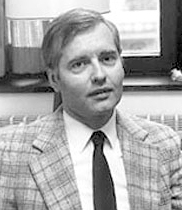
Larry W. Jones arrived in Bloomsburg in 1981 as its new Provost and Vice-President for Academic Affairs. Before coming to Bloomsburg he had been at Eastern Montana College where he was the academic vice-president and dean of the faculty. His education included a bachelor's degree in mathematics and statistics from North Dakota State University in 1962, a master's degree in management from the same school in 1964, and his Ph.D. in curriculum development from the University of Oregon in 1971. From 1971 to 1976 he taught at Morehead State University in Kentucky.
Dr. Jones served well as Provost, and when Dr. McCormick was named the first chancellor of the State System of Higher Education in 1983 he was the logical choice as interim president. When Dr. McCormick was named the permanent chancellor, Jones continued serving for another year until Harry Ausprich became president. During his two years in office, Dr. Jones proved to be an efficient and committed administrator who gave stability to the University during its transitional phase from a college.
After serving as president he returned to his job as Provost in 1985 and then left the following year to return to Morehead State as the Dean of its College of Professional Studies. He remained in that position until his death in March of 1990 at the age of 49.
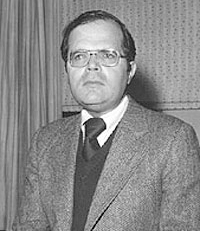
The long and arduous search process to find a permanent replacement for Robert Nossen as president of Bloomsburg State College (BSC) was completed on July 30, 1973, when Governor Milton Shapp announced that Dr. James H. McCormick, the Vice President for Administration at Shippensburg State College, had been appointed to the position. Although only 34 years of age at the time of his appointment he brought to Bloomsburg years of experience in organization and administration. He received his bachelor's degree from Indiana University (PA), and a master's degree in curriculum and administration, and a doctorate in Educational Administration from the University of Pittsburgh.
Dr. McCormick joined the faculty at Shippensburg in 1965 as an associate professor in the Department of Education and Psychology, and during his time there served as assistant dean of academic affairs, acting dean of Teacher Education, assistant to the President, and Vice President for Administration. He was involved with the Shippensburg State College faculty senate and was one of the two vice-presidents on the Commonwealth team that negotiated the first faculty contract in 1971-72.
When Dr. McCormick came to Bloomsburg he quickly decided that more planning was needed in order to help the college accomplish its academic mission and to diversify its curriculum away from being predominately teacher education. During his ten-year tenure, a number of new majors were added which helped to increase enrollment and ensured the future of the college. These included nursing and the Master's in Business Administration. The growth in the school was also shown by the fact that its budget more than doubled from 1973 to 1983, going from just under $14 million to $32 million.
Although the campus did not grow as rapidly as it had the previous decade, there was evident growth in its physical layout. The new football field was dedicated to Robert B. Redman Stadium in September 1974; the last dormitory on the lower campus, Lycoming Hall, was dedicated in 1976; and in March 1983, Dr. McCormick participated in the groundbreaking ceremony for the new student services center that bears his name. Other areas of change were a child center for faculty, staff, and students that were established in 1981 and a rock garden near Kehr Union.
The biggest change that happened to Bloomsburg State College occurred near the end of his tenure as president in 1982 when the Pennsylvania State System of Higher Education was created and BSC was to become a university. Dr. McCormick was named to serve as interim chancellor of the new state system beginning July 1, 1983, and granted a one-year leave of absence from Bloomsburg. But in 1984 it was decided he would become the permanent chancellor, and he remained in that position for 18 years until leaving in 2001 to become chancellor of the Minnesota State Colleges and Universities system.
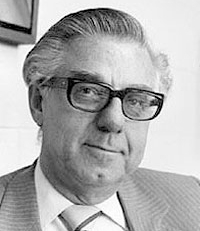
Charles H. Carlson is a native of Kingsburg, CA, and received a BA in music from San Jose State College, as well as serving two years in Japan and Korea with the U.S. Army. He earned an MA and Ph.D. in Education from Columbia University, teaching there two years before coming to Bloomsburg as an Associate Professor of Music in 1959. During his seven years in the department, he became a full professor, Chairman, and director of the Maroon and Gold and Studio bands. In 1966 he began his career in administration as assistant director of Graduate Studies, and by 1970 had become Dean and Director of Research Activities.
When Robert Nossen resigned as President of Bloomsburg State College Dr. Carlson was named acting president by then-Governor Milton J. Shapp. He was sworn in at a ceremony in Carver Hall by Dr. John Pittenger, Pennsylvania Secretary of Education, on August 31, 1972. Although no great changes occurred during his one year as president, this time did see the completion of several building projects on campus, when the Waller Administration Building, Kehr Union, and Nelson Field House were all dedicated on May 5, 1973.
Following the appointment of James McCormick as president, Dr. Carlson took a year's sabbatical and then returned as Dean of the Graduate School. He became Assistant Vice President for Academic Affairs in 1983 and remained in that position until his retirement on December 27, 1991, after 32 years of service.
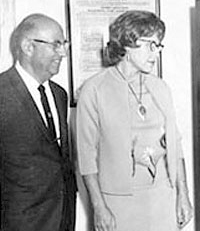
Dr. Nossen was the top choice among 47 applicants for President of BSC, and he officially took over on September 5, 1969. He immediately had to face many of the problems confronting college campuses during the 1960s. The addressing of these issues had been postponed to some extent while Dr. Andruss was still in charge, but now they came to the forefront. One of the first of these was the adoption of the "BSC Joint Statement on Rights, Freedoms, and Responsibilities of Students." This was particularly important because it formally set as part of the campus governance the students' freedom to learn, their rights as members of the college community, and also set standards of evaluation. Another change involved restructuring the general education program to give students more responsibility and say in their choice of courses.
The physical campus continued to expand rapidly during this time. In 1970 Columbia Hall, the William W. Scranton Commons, and the Bakeless Center for the Humanities were all completed. This was followed in 1972 by the tri-level parking garage, Nelson Field House, and Waller Administration Building. Dr. Nossen was interested in a more responsive administration as well, so in 1970 the separate positions of vice-president for academic affairs, administration, and students were created.
In May of 1971, the real controversy began. A chain of events started that led to the resignation of Robert Nossen less than a year later. After the resignation of four head coaches the affairs of the college were made public and by September students began to circulate petitions, showing their dissatisfaction with the administration. In January of 1972, a decision was made by the board of trustees to investigate all charges relative to the operation of the college. In March a committee found that the trustees had gone too far when they asked Nossen to step down as president, but the committee recommended that it would probably be better if he did find a job elsewhere. After Nossen's resignation on April 28, 1972, the headlines read, "NCAA places BSC on probation." The college's athletic teams were placed on probation in August following accusations that rules concerning financial aid to athletes had been broken, the grades of certain students had been changed, athletes were paid for work they did not do, and high school transcripts were altered to assure admission and eligibility. The latter two counts were eventually proven false, and the ban was lifted except for the wrestling team, which still had a one-year probation.
A final irony of Dr. Nossen's stormy tenure at Bloomsburg was the appearance of Hurricane Agnes at the end of June 1972. Although the campus was minimally affected, flooding in the town forced people from their homes, and temporary trailers that were placed on the upper campus remained for over two years.
After his presidency at BSC Nossen became the associate provost and professor of higher education at the University of Pittsburgh. He later became the editor of the Journal and Newsletter of Pennsylvania Association for Adults and Continuing Education. Robert J. Nossen died at his home near Pittsburgh on July 29, 1997, at the age of 76.
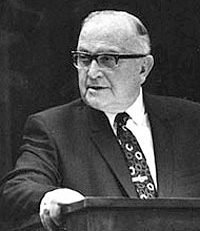
Harvey A. Andruss was born February 19, 1902, in Fort Worth, TX, and received an undergraduate degree from the University of Oklahoma in 1924 and an MBA from Northwestern University in 1926.
In 1930 he was hired as the first director of the Department of Business Education and then Dean of Instruction at Bloomsburg State Teachers College (BSTC). He remained in that position for two years before becoming acting President in 1939 following the resignation of Francis B. Haas. On January 15, 1941, Andruss was formally named President of the College.
When enrollment dropped sharply during World War II he had Bloomsburg designated as a Civilian Pilot Training Center, which led to hundreds of naval recruits being trained here and kept the school open. In 1945 Andruss was sent to Shrivenham, England to help organize universities for GIs during the war.
After his return in 1946, he began planning for the programs and facilities that the college needed in order to grow in the post-war years. Because of the large numbers of veterans returning to school at this time an agreement was made for liberal arts students at Penn State to study at BSTC. Dr. Andruss had his own association with Penn State, which resulted in his being awarded a Ph.D. in Education from there in 1949.
The physical size of the campus began to grow once again by the mid-1950s, beginning with the opening on April 23, 1957, of the College Commons and two years later by a new men's dormitory. In 1960 the first new classroom building in over 20 years, Sutliff Hall, was dedicated in honor of Dean Emeritus William Boyd Sutliff. Also in 1960 "Teachers" was removed from the school's title making it Bloomsburg State College, and the same year it was given the approval to offer graduate studies and grant master's degrees. By 1962 the college had been given permission from the State Council of Education to offer Bachelor's Degrees in humanities, natural science, and social sciences.
The following year Dr. Andruss was granted a semester leave and upon his return, more changes at BSC began to occur. In 1967 the new library was dedicated to him because of his years of work in championing its importance as the heart of the college. During his last two years more expansion was accomplished as Haas Auditorium and Hartline Science Center were dedicated and the Elwell Hall dormitory completed.
On January 22, 1969, after thirty years, Dr. Andruss announced his retirement and was designated President Emeritus. It was the end of an era for a College that would continue to grow and prosper even after his tenure as president was over. In 1974 he was named Honorary Chairman of Alumni Funds Campaign, and continued to live in Bloomsburg until his death on February 9, 1984. His memory at Bloomsburg University continues to live on in the new Harvey A. Andruss Library, which was dedicated in September 1998.
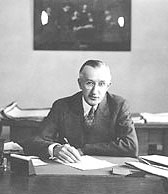
Francis Buchman Haas was born June 6, 1884, and raised in Philadelphia, graduating from Central High School in 1904. He received a Bachelor of Science degree from Temple University, a master's from the University of Pennsylvania in 1922, and a Doctor of Pedagogy from Temple in 1925. He taught in the Philadelphia public school system for 15 years until being appointed the assistant director of the Teachers Bureau of the Department of Public Instruction in Harrisburg in 1920. After several advancements, he was appointed to the position of Pennsylvania State Superintendent of Public Instruction in 1926.
On April 11, 1927, Dr. Haas was elected principal of the Bloomsburg State Teachers College. In the first few years of his term, he oversaw the naming of Carver, Waller, and Noetling Halls; the first official Homecoming Day at Bloomsburg on November 17, 1928; and the completion of the Ben Franklin Training School and college laundry in 1930.
In the spring of 1929, Dr. Haas became BSTC's first president when the title of principal was changed to that of the president. In 1930 the Department of Commerce was started under Harvey Andruss with a four-year course in commercial teaching. The spring of 1935 saw the first class to have every graduate receive a degree, and that summer Dr. Haas succeeded in having the State Council of Education grant BSTC the right to establish special education courses.
The physical nature of the campus changed dramatically for the first time in forty years during the 1930s. The new athletic field was built above North Hall (now the quad, McCormick, and Waller), and renovations made to the gym and other existing buildings. Numerous construction projects began in 1938, including Navy Hall, Centennial Gymnasium, the storage building, and an enlargement of the heating plant.
The last great achievement of Dr. Haas' tenure was the Centennial celebration in May 1939 that marked the 100th anniversary of the institution that had become the Bloomsburg State Teachers College. He laid the groundwork for the celebration and helped to make it a very memorable event. Three months later in August 1939, he was reappointed State Superintendent of Public Instruction, and his time at Bloomsburg came to an end.
Dr. Haas remained superintendent until his retirement in 1954, ending nearly 50 years of educational service to the state. He lived in Harrisburg until his death at the age of 81 on February 28, 1966.
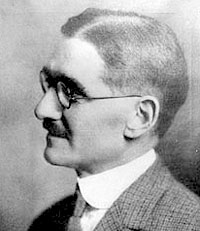
Guido Carl Leo Riemer was born in Sax Weimer, Germany on August 27, 1873, and came to America with his family in 1882. He prepped at the Clarion State Normal School and the Bucknell Academy before earning his BA and MA degrees at Bucknell University, and then in 1900 received a second MA from Harvard University. Riemer later received his Doctor of Philosophy degree at the University of Leipzig in Germany, and from 1901-1918 served as a professor of German at Bucknell. Before his term as principal of the Bloomsburg State Normal School (BSNS), Riemer was an official in the Department of Public Instruction at Harrisburg.
During his term at BSNS Riemer developed new rules and regulations for students living outside the dormitories. But his biggest accomplishment as principal was in 1926 when the Board of Trustees accepted Riemer's recommendation to change the normal school into an institution designed to prepare teachers for the public schools of Pennsylvania. On June 4, 1926, Bloomsburg was given the privilege to grant degrees and the school's name was formally changed to State Teachers College at Bloomsburg in May of 1927. After these accomplishments, Riemer resigned from his job as principal the following month.
Dr. Riemer continued to work in the Pennsylvania State Education System after leaving Bloomsburg. He was principal and then president of Clarion State Teachers College from 1928 to 1937, and a professor of speech at Kutztown from 1937 until his retirement in 1943. He remained there until 1950 when he and his wife went to Shaker Heights, Ohio to live with their son. Dr. Riemer died there on March 13, 1953, at the age of 79.
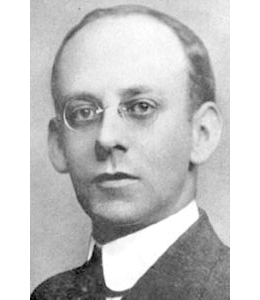
Before becoming principal of the Bloomsburg State Normal School (BSNS), Charles Henry Fisher had extensive experience in the field of education. He taught in York, PA and Trenton, NJ, and had been a professor of education at Swarthmore College. In addition, Fisher was the head of the education department at West Chester State Normal and assistant director of the Teachers Bureau of the State Department of Public Instruction at Harrisburg.
Dr. Fisher's most ambitious project at BSNS was the establishment of a Bureau of Educational Research. In 1922 he started a three-year course for teachers of junior high school age students, which was the normal school's first step towards college status. In 1923 he resigned from Bloomsburg and became president of the Western Washington State Teachers College at Bellingham. Fisher left there after sixteen years when a dispute developed over his defense of academic freedom.
He later worked as a professor of education administration at New York University, and in 1942 became the Dean of Huron College in South Dakota. In the last years of World War II, he returned to Washington to work as a materials priority director for the state. Charles Fisher died on December 8, 1964, at the age of 84 in a suburb of Seattle, Washington. In 1968 Western Washington honored Dr. Fisher by dedicating the Fisher Fountain to his memory.
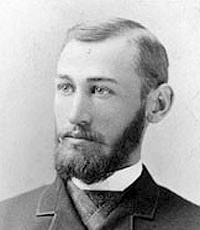
In July of 1890, Judson Perry Welsh became the second graduate of Bloomsburg to become principal of the school, the first being his predecessor, David Waller. He was born on August 13, 1857, in a stone house near Orangeville, and after graduating from the Bloomsburg State Normal School in 1876 Welsh went on to receive a BA from Lafayette College in 1882. That same year took a faculty position at West Chester State Normal School, where he taught and served as vice-principal of the school. He continued his own education however and earned his master's degree at Lafayette in 1887 and a Ph.D. from there in 1891. But it was in April 1890 after David Waller announced his intention of leaving Bloomsburg that Welsh was offered and accepted the post as its new principal.
During his tenure at Bloomsburg, Dr. Welsh implemented the first course in manual training, as well as adding additional commercial and advanced methods courses. In November of 1895, he oversaw the creation of a student government as Bloomsburg became the first school of its kind to develop a form of student government. Welsh, in conjunction with the Board of Trustees, was also active in promoting expansion in the size of the school campus and creating room for a growing student population. In February of 1894, the dormitory addition and gymnasium were dedicated.
The gymnasium was very advanced for its time and was one of the finest facilities in this part of the state. It was used by the physical education classes for gymnastic exhibitions and hosted the newly organized basketball team, which enjoyed great success during these years. Other changes to the campus included the construction of an employee's dormitory in 1895 and the building of a boiler house and remodeling of Institute Hall and its auditorium in 1900. In 1904 Welsh and his family moved into the recently purchased Buckalew Place, beginning a tradition that continues to the present.
The finest building accomplishment during his tenure, however, was Science Hall, which was completed his last year at Bloomsburg and was state-of-the-art for its day.
In July of 1906, Dr. Welsh was offered the vice presidency of Pennsylvania State College, and the following month submitted his resignation. His time at Penn State, however, was not nearly as successful as his tenure at Bloomsburg has been. He served under an interim president who allowed him full control of the daily operations of the college, but in an attempt to show his abilities to become the next permanent president Welsh only succeeded in alienating the faculty and students. The faculty especially believed he exercised too much authority and resented that fact, even though some of the policies he instituted did benefit the school. by the time a new president was brought in in 1908 Welsh was serving as registrar, but was then moved to a position with little responsibility.
In 1910 he left Penn State to take a position at the Merchant's Dispatch, Inc. of New York City, and he and his family moved to Pleasantville, N.Y. where they resided for twenty years. Judson Perry Welsh died at his home there at the age of 77 on August 29, 1934.
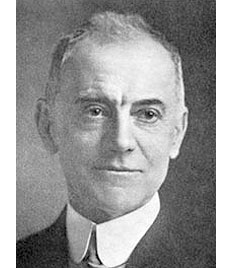
David Jewett Waller was a Bloomsburg native, having been born here on June 17, 1846. His father, David Waller Sr., helped to found the Bloomsburg Academy seven years before in 1839. Waller Jr. became one of the first three graduates of the Literary Institute in 1867 and further contributed to his school by working to solicit funds for a bell to go in the tower of what is now Carver Hall. He then went on to earn his BA from Lafayette College in 1870 and master's degree in 1873. Waller also pursued theological studies at Princeton and Union Seminary, from which he graduated in 1874 and followed in the footsteps of his father by becoming an ordained Presbyterian minister. His pastorates were in Philadelphia and Orangeville, but in 1877 he was asked to come back to Bloomsburg as principal of the normal school. This was the beginning of his 44-year career as an educator in the Commonwealth of Pennsylvania.
There were still problems at the school from the tenure of T.L. Griswold and dissension among the trustees. But the president of the board, Judge Elwell, promised that there would be cooperation, and so in July 1877 Waller was elected and accepted the position of principal.
The early years of his first tenure were marked with some financial difficulties due to problems with the state's economy. But the growing reputation of the school and increased enrollment led to a more stable environment for both the students and faculty, even though at one time their salaries had to be reduced. The normal school also grew in size, with land surrounding it being acquired, and in 1885 the construction of the new model school building, later to be called Noetling Hall.
But in December 1889 the Pennsylvania Superintendent of Public Instruction died, and Dr. Waller became interested in the position. It was with great regret therefore that in March 1890 the Board of Trustees accepted his resignation as principal of the normal school. Waller was appointed by the governor to complete the last three years of the four-year term of his predecessor. There was a conflict, however, when the new governor wanted his man, the principal at the Indiana State Normal School, to become superintendent. It eventually went to the state supreme court which ruled in Waller's favor. He completed his term in 1893 after a successful tenure which saw real improvements in the state's educational system, especially in terms of financial aid to the schools.
In June of 1893, Dr. Waller becomes, ironically enough, the new principal at the Indiana State Normal School. He was the seventh person to hold that position and remained there for thirteen years. During this time the institution saw the same growth and development that Bloomsburg and the public school system had experienced. Several new buildings were constructed, including a dormitory, training school, and recitation hall. Dr. Waller taught psychology and pedagogics as part of the normal school's professional department in addition to his administrative duties. Indiana constructed a new gymnasium in 1928 and honored David Waller twenty years later when it named the building Waller Hall.
When Judson Welsh left Bloomsburg in 1906 David Waller was asked to come back for a second time as principal, and to the relief of the school and the trustees, he accepted. The Normal School continued to grow in enrollment and stature, although no new buildings would be constructed until 1930 during the tenure of Francis Haas. May Day ceremonies were begun in 1910, and the first school yearbook, Onward, was published in 1915. It was followed the next year by the Obiter, which continues to be issued to this day. Another significant event in 1916 was the formal sale of the Bloomsburg State Normal School to the Commonwealth of Pennsylvania. It was now a fully state-owned institution. Further evidence of the school's growth was the need in 1919 for its first summer session.
His last two years saw the acquiring of several enduring memorials for the campus. The first of these were four stained-glass windows purchased from the George W. Spence Company of Boston and placed in the model school in late 1918 and early 1919. For Memorial Day of 1919, the War Memorial Pinery was established to the north of Carver Hall in honor of the men and women affiliated with Bloomsburg who had given their lives during World War I.
The greatest memorial, however, was ordered in 1919 from the famed Tiffany Studios in New York City. Three large stained-glass windows on the themes of Truth and Virtue were intended to honor the 50th anniversary of the first class of teachers in 1920. But when David Waller announced early that year that he would be retiring at the age of 74, the windows were also planned as a tribute to his many years of service. So on Alumni Day, June 5, 1920, an impressive ceremony took place and the windows were unveiled for the first time in all their glory. They were installed in the addition to the main dormitory building, which was named after Dr. Waller in 1927.
After his retirement, he continued to be active in the life of the town and the Normal School. He was present at most Alumni events and in 1922 received a further honor when a bronze tablet from the Tiffany Studios was purchased with an inscription detailing his many contributions to the field of education.
Dr. Waller was respected and loved by the many graduates who came back to Bloomsburg year after year, and he was selected to ring the Carver Hall bell he had helped to purchase in May 1938 to begin the school's centennial celebration. His devotion and contributions to the now Bloomsburg State Teachers College continued until his death on June 28, 1941, eleven days after his 95th birthday.
David Waller continues to be remembered at the institution cofounded by his father, as exemplified by the new administration building which was named after him and dedicated in 1973. The bronze tablet purchased in his honor now hangs proudly next to the two magnificent Tiffany windows in the new library, serving as a perpetual reminder after 80 years of the reasons why Dr. Waller meant so much to Bloomsburg.
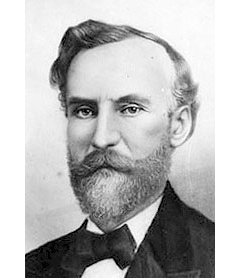
Dr. Griswold was a physician and educator from Oswego, N.Y. prior to being appointed principal of the Bloomsburg Literary Institute and State Normal School in June of 1873, being one of three candidates for the position. He not only served as principal but was also a professor of mental and moral science and the theory and practice of teaching, and taught the physical culture classes. Griswold worked to strengthen the coursework of the school and firmly believed that a normal school's philosophy had to be to teach teachers for the profession of teaching. In this way, the new teachers would be able to instigate improvements of their own in the grade schools and high schools throughout the state. As he wrote five weeks after starting at Bloomsburg: "Thoroughness in scholarship and discipline is our motto."
The one great calamity during Dr. Griswold's tenure as principal was the September 4, 1875 fire that destroyed the dormitory building. Committees were immediately formed to aid the displaced students by providing new housing in the town and purchasing their clothing, books, and other necessities. Plans were immediately made for the new dormitory building to be built on the same site for a cost of nearly $48,000. The cornerstone was laid at the end of October, and less than eight months after the fire it was dedicated on April 26, 1876. Fifty years later the dormitory would be named Waller Hall.
Although the normal school was prospering and now financially solvent a controversy arose on March 23, 1877, when Dr. Griswold was accused of teaching Spiritualism. Rumors had circulated throughout the town about the moral and religious teaching at the school and the trustees elected a committee to look into the allegations. In June the committee reported back and the majority did not find any real problem, but two members had talked to a faculty member who thought that Griswold was undermining religious thought and beliefs in both chapel and the classroom, and this was beginning to erode the convictions of some of the students.
When the board met again in July it refused to re-elect Dr. Griswold for a second term by a vote of nine against and eight in favor. Problems continued with Griswold however when he claimed the school owed him nearly $2000. The case dragged on and little by little the debt to Dr. Griswold was paid, although the situation was further complicated in 1878 when contractors on the dormitory demanded more money. It was not until a special state appropriation came through in 1880 that all debts were cleared, and the relationship between Bloomsburg and T.L. Griswold finally ended.
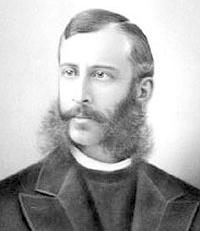
Reverend John Reeves Hewitt took over as principal of the Bloomsburg State Normal School on March 28, 1872. He was born in England, the son of an Episcopal minister, the Reverend Horatio Hewitt, and the family came over to the United States when he was very young. John Hewitt became rector of St. Paul's Episcopal Church in Bloomsburg in 1870 and continued his duties there while serving as principal of the normal school. The discipline at the school was much stricter while he was in charge. The trustees granted Hewitt the power to dismiss or replace teachers, and students required his permission in order to leave campus.
Hewitt served well as principal, but in April of 1873 asked the Board of Trustees to relieve him of his duties at the end of the spring term, so he could return to the ministry full-time. When graduation in June of that year concluded his tenure as principal was complete. John Hewitt was commended for the able and efficient manner in which he had run the normal school. He left St. Paul's in 1877, and continued on in the ministry, serving as pastor at Episcopal churches in Columbus, OH, Bellefonte, PA, and North Carolina. After his retirement, he lived in Coldwater, Michigan, where he died on February 19, 1918.
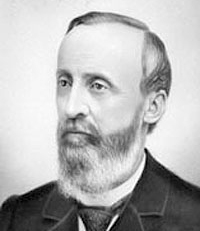
Charles Gillespie Barkley was the second principal of the Bloomsburg State Normal School (BSNS), serving for three months following the resignation of Henry Carver. Barkley was born on January 30, 1839, in Bloomsburg and lived here his entire life. Before becoming principal of BSNS he had worked in the field of education and studied law. In 1863 he was admitted to the Bar and elected superintendent of common schools in Columbia County, a position he held until 1872.
The superintendent of public schools in Pennsylvania, J.P. Wickersham, recommended Barkley for the position of principal in December 1871. His term began on December 20, and it was understood to be a temporary appointment until a permanent successor could be found. His time in office lent stability to the school, with increased enrollment and more organized finances. In March of 1872, it was mentioned at a trustees' meeting that Barkley wished to return to his law practice and that the Rev. John Hewitt was willing to serve as principal. The board immediately elected the reverend to the post as permanent principal and expressed their gratitude to Barkley for taking over when his help was needed.
After the end of his term as principal of BSNS in 1872 Barkley left the field of education entirely and devoted his full attention to the practice of law. But he did not forsake the school entirely, because on May 3, 1875, he was appointed a member of the BSNS Board of Trustees and served until his death on October 10, 1900.
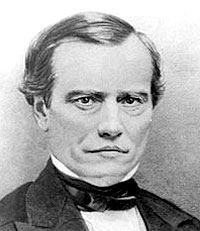
In 1866 Henry J. Carver became the first principal of what eventually became Bloomsburg University. Before coming to Bloomsburg Carver had headed the preparatory department at the University of California and taught at the Union Academy in Brighton, New York, being a native of Binghamton. He lost his left hand in a hunting accident while in California, and so came back east to recuperate. In the spring of 1866, he came through Bloomsburg and was asked to stay and head the Bloomsburg Academy, which soon became the Bloomsburg Literary and Commercial Institute and Pennsylvania State Normal School.
When asked to stay for a second term he said he would do so only if a suitable facility was provided to replace the old Academy building. The trustees of the school agreed to this and Carver proceeded to design and construct a new building that became known as Institute Hall. It was dedicated in the spring of 1867 and would be named Carver Hall in his honor 60 years later.
The following year construction began on a dormitory which was completed in February 1869. While at Bloomsburg Carver was very interested in student affairs. He encouraged the students to form the Philologian Literary Society and urged them, including future principal David Waller, to raise money for a bell to be placed in the Institute Hall tower. Carver served not only as principal but also a professor of civil engineering and taught intellectual and moral philosophy. Due to Carver's determination and dedication this growing private school was established as the Bloomsburg State Normal School in 1869.
In five short years, Carver had laid the foundation for what would one day become a state university. Carver may have made more progress had he not be stricken with an illness that forced him to miss most of the winter term of 1871. Not long after a combination of his illness and a financial disagreement with the Board of Trustees forced him to resign his position as principal in December of 1871.
Following his tenure at Bloomsburg Carver went to Colorado to become superintendent of the East Denver school system. Health concerns forced him to surrender this position as well and he went to New Jersey as principal of the Vineland High School in the mid-1870s, and then in 1882, he became principal of the Manasquan, NJ public schools. He became ill again in 1884 and eventually ended up in Glenwood Springs, Colorado where he went for treatment. Henry J. Carver died there on February 20, 1889, at the age of 68, having completed a rewarding career in education and becoming a name forever linked with the history of Bloomsburg University.

